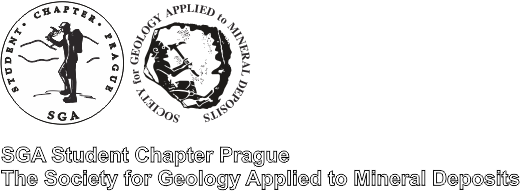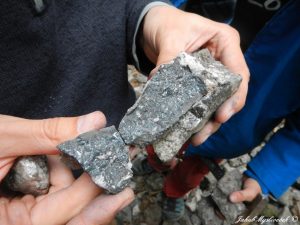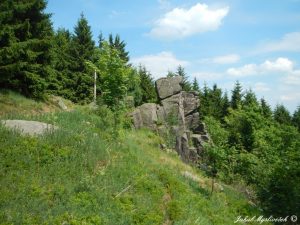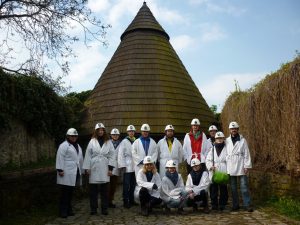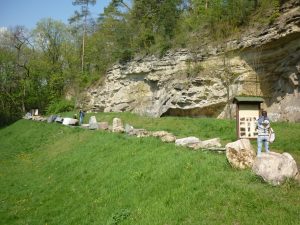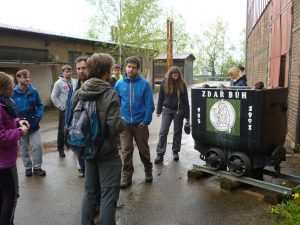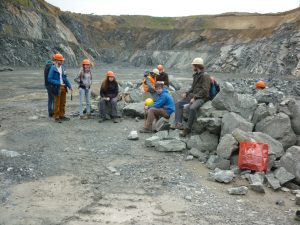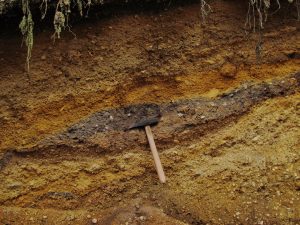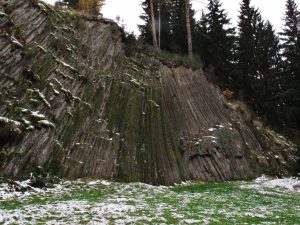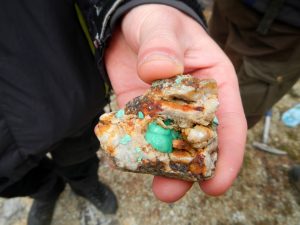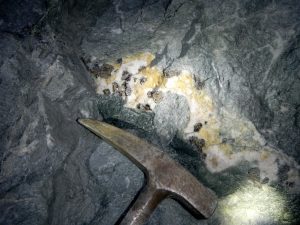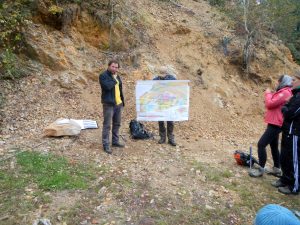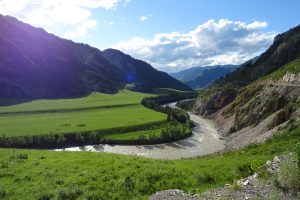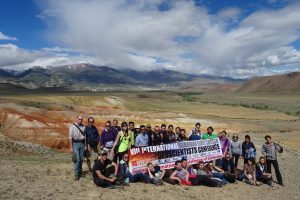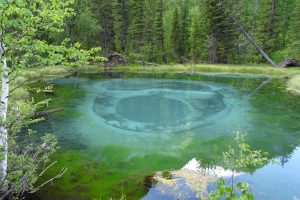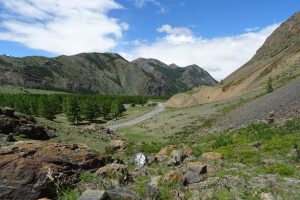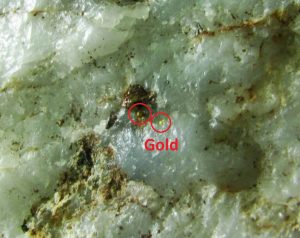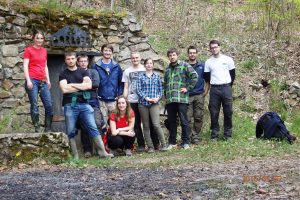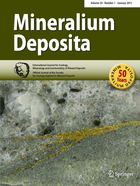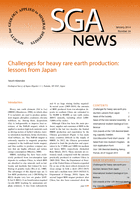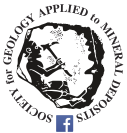This two day field trip took place from 3th to 4th of June 2017 and was concipated to visit mainly Fe, Mn and fluorite deposits in the central part of Krušné hory Mts. (Erzgebirge) with some additional stops on other deposits.
First day:
We started the excursion in town Horní Blatná. Here we visited vein of Marie Terezie and heap of Concordia adit . Minerals occurring there were mostly Mn ore – pyroluzite. We found also quartz in small crystals up to 3 mm. Then we moved to „Ametystová Halže“ near Horní Halže village. This site is old mining part of Měděnec district and there is a large number of surface exposure of old mining activity. We found mostly amethyst and quartz crystals, ordinarily in clusters up to 7 cm and the primary Fe ores like limonite and pyrite.
After first part of the excursion we moved to rock formation called „Sphings“ near town Měděnec formed by very high pressure deformed „eyes-schist“ from Variscian orogeny processes.
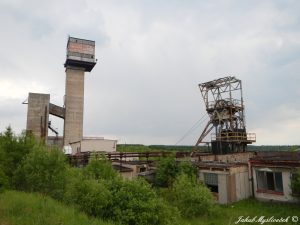 From this place we could see landscape of Doupovské hory volcanic centre. Our another stop was at Mědník hill near town Měděnec. This small hill is the skarn body preparated by erosion in Quaternary and one of the most mined Fe and Cu deposit in early modern age. We ascended to the top of the hill around old skarn heaps and there was lecture about local mining from medieval to the end of 20th century.
From this place we could see landscape of Doupovské hory volcanic centre. Our another stop was at Mědník hill near town Měděnec. This small hill is the skarn body preparated by erosion in Quaternary and one of the most mined Fe and Cu deposit in early modern age. We ascended to the top of the hill around old skarn heaps and there was lecture about local mining from medieval to the end of 20th century.
Second day:
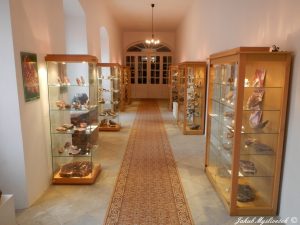 The weather condition did not allow us to see all three fluorite deposits in Krušné hory Mts. according to former plan, but only Hradiště fluorite deposit near Kadaň town and Kláštěrec nad Ohří town. This small deposit was mined for barite, fluorite and hematite. We found only fluorite and hematite samples. After that we moved to The Chateau at Klášterec nad Ohří town, where was also an exhibition of local minerals. We saw very nice samples of polished agates from Horní Halže village, Černý Potok vil., Ciboušov vil. and other sites.
The weather condition did not allow us to see all three fluorite deposits in Krušné hory Mts. according to former plan, but only Hradiště fluorite deposit near Kadaň town and Kláštěrec nad Ohří town. This small deposit was mined for barite, fluorite and hematite. We found only fluorite and hematite samples. After that we moved to The Chateau at Klášterec nad Ohří town, where was also an exhibition of local minerals. We saw very nice samples of polished agates from Horní Halže village, Černý Potok vil., Ciboušov vil. and other sites.
After that we visited local spa area and we drank local hydrothermal water from the spring. 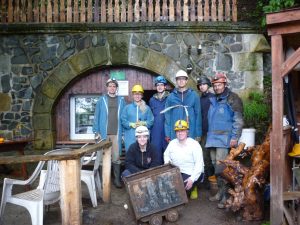 This hydrothermal energy is caused by volcanic activity bound on Ohře rift and was formed mostly in Tertiary. Then we moved to quick visit of Ahníkov (former vil.) – site with minerals of weathering of laterites. We found specific minerals like white and purple chalcedone, green chryzotile and small crystals of quartz. After that we moved to our last site which was Lehnschafter adit in Mikulov town. Mikulov was mined mostly for Ag ores like Ag-rich galenite.
This hydrothermal energy is caused by volcanic activity bound on Ohře rift and was formed mostly in Tertiary. Then we moved to quick visit of Ahníkov (former vil.) – site with minerals of weathering of laterites. We found specific minerals like white and purple chalcedone, green chryzotile and small crystals of quartz. After that we moved to our last site which was Lehnschafter adit in Mikulov town. Mikulov was mined mostly for Ag ores like Ag-rich galenite.
Eight Chapter members paticipated on this excurstion led by Bc. Jakub Mysliveček.
For more photos please visit this link.

